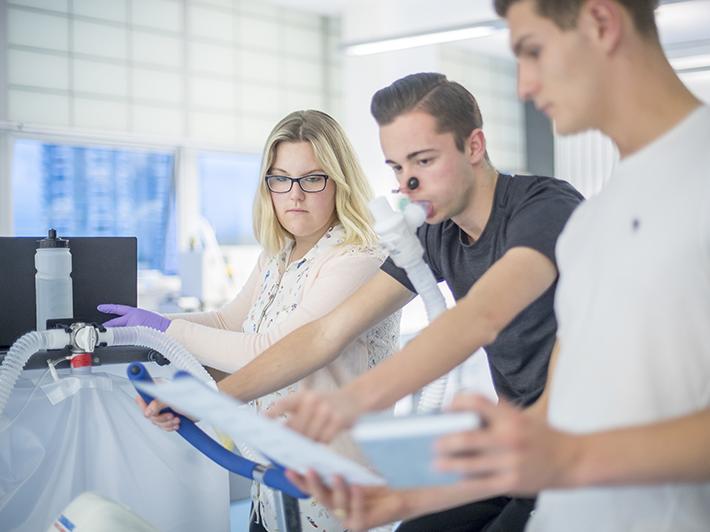Change at the University of Cambridge is never straightforward. Governance, processes and politics can make progress feel slow. For technical staff, who already face complex structures and limited visibility, this can feel isolating, difficult to navigate and could be defined as “institutional Inertia”.
The disparate nature of the technical workforce does not help with this. At least 1,300 technicians work across up to 150 departments in a variety of sectors, grades and job families. Working with central functions can also be difficult because of a disconnect that arises from the localised and siloed nature of technical work and possibly misunderstanding or mistrust (or at least wariness) of central processes. Yet change is indeed possible. Communication and networking can create momentum and connection.
- Career development for technicians in higher education
- Technical staff who support student learning deserve more professional recognition
- ‘Changing the culture from academic-owned equipment to shared ownership is not easy’
As a signatory to the Technician Commitment, the university is committed to tackling many of the issues technical staff can face, such as career progression. Some of the solutions to these involve drafting policy, creating bespoke training and working with teams across the Institution (and beyond). The university is fortunate enough to have dedicated staff for technicians who can facilitate this.
Ultimately, though, the core challenge is one of communication and engagement. How can you communicate with and connect to such a dispersed group?
Institutional networking benefits not only individuals and teams but also the institution through efficiencies, innovation and sharing skills and best practice. Some of the solutions that have worked at Cambridge include:
- a quarterly newsletter for technical staff and social channels that provide updates, opportunities, visibility and recognition
- local networking sessions each term and regular training events, which offer ways to share best practice and break down siloes
- Repair Café sessions and practical skills-based sessions to build community, promote technical skills and share expertise.
Some of these are basic tools, but they begin to provide a safety net and structure for technical staff in areas where opportunities might not be highlighted as well as they are for others or where regular staff reviews are not occurring. Others, such as the Repair Café (where items fixed include backpacks, jewellery, clocks, lamps and laptops), are based on suggestions from technical staff themselves and then delivered by the central team. Developing these systems (and other solutions across the technician agenda) is not necessarily difficult but they do require problems to be identified, contacts, understanding of processes (perhaps making new ones) and action.
These concepts are familiar to a lot of technical staff. They often manage complex systems, processes and people as part of their job. However, they don’t usually have time to work beyond their area or deal with administration systems that may not understand their roles or needs.
The newsletter, for example, was developed through conversations with colleagues in human resources to identify contacts, working with the Communications Office, who had responsibility for the newsletter tool, and completing training. Even this took more than six months, simply because of time pressures and staff workloads. It could be easy to become demotivated quickly, especially if you have many other urgent tasks to deal with.
Similarly, the Repair Café initiative came about through talking with technical staff. Some were volunteering outside the university and simply asked: “Wouldn’t it be great if we could do these here?” The initiative has since been supported across the university by all staff and other teams around themes such as sustainability, outreach, civic engagement, well-being, and equity, diversity and inclusion. The details of the process to establish these are elsewhere, but both these examples come down to one thing: communication.
The power of networks
Internal networking has been crucial in connecting and empowering our technicians. Simple conversations have led to projects, policies and projects that would not otherwise have existed. There is more work to do; establishing a community of practice would be a great way to bring together groups by subject or location and share ideas, but change is happening.
External networking is also incredibly important. Connecting with other technical professionals leads to sharing best practice and encourages collaboration. Indeed, the university is now developing workshops for technical staff beyond itself. The size of the university means that it is also possible to make connections internally through external networks.
Initiatives developed as a result of our networks include:
- a technician video series
- inter-institutional collaborative workshops
- development of fair attribution guidelines and workshops
- focus groups on specific challenges
- connecting T-level hosts/potential hosts.
Reflections on turning siloes into connections
As an individual, it might be difficult to tackle change on this scale. Yet. But perhaps you have an idea connected to something listed here or even something totally new. Take that idea and ask the question. Speak to colleagues within your area and beyond. Network. Share your idea. Look to see if something similar has been done elsewhere. It probably has; most solutions here are not novel, except perhaps the scale and how leadership channels are navigated.
Technicians themselves will have many of the answers to the challenges they face and can bridge staff groups. But they are often siloed and not connected. Maybe they have not been engaged with or asked. Until now.
Slightly shockingly, the issues technical staff have faced have not necessarily been created intentionally; they have simply often been lost between the cracks, hidden away and perhaps forgotten. The encouraging part of this is that solutions are all there and, with the right connections and persistence, they can be solved. Start small, build trust with your community and persist.
John Nicolson is technician development adviser in the learning and organisational development team at the University of Cambridge. John was shortlisted in the Technician of the Year category in the THE Awards 2025. A full list of all finalists can be found here.
If you’d like advice and insight from academics and university staff delivered direct to your inbox each week, sign up for the Campus newsletter.




comment